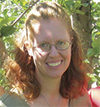Nestled in the rolling hills of southwest Wisconsin, milk cows graze in a picturesque setting, munching on green grass. Later in the day, they will make their way home to the comfortable freestalls and feeding barn. Here they will eat a TMR (total mixed ration). This combination of rotational grazing and feeding of a TMR mixture is why I consider our farm a hybrid.
We have about 100 acres split into 15 different paddocks. In each paddock you will find a mixture of brome grass, blue grass, fescue and clover. The pasture provides a good source of forage that allows the cow to fill her rumen and keep it functioning like it is supposed to. Cows spend a few days in each paddock before we move them to another. The goal is to have them eat just the right amount of grass to cut it back, but allow the plant to stay healthy and keep going.
Throughout the season, the paddocks will be used a number of times. A paddock is a section of the pasture that is fenced off, and the cows are only able to eat a certain area. We use high-tensile poly electric fence wire to separate the paddocks. As the summer wears on, we will also limit feed. Every morning we move what is called the lead fence ahead a bit to give them a limited amount of area to eat. This allows them a fresh section every day and keeps the rest of paddock growing efficiency.
As spring starts, we let the cows out during the day but keep them in at night. As the grass starts growing well, the cows are out both morning and night. We graze as late as Mother Nature will let us. It’s been the first part of December some years before we have to keep them in the freestalls.
What makes our farm a hybrid is that we also feed the cows a TMR mixture every day. After lunch, the cows are let home to eat their grain mix before afternoon milking. The grain mix stays in the bunk for about 24 hours before fresh feed is added. The cows are able to snack on this before and after each milking two times a day. The grain mix consists of ground corn, corn syrup, corn silage, baleage cottonseed, vegetable fat, soybean meal, vitamins and minerals.
These are typical items you see fed to cows. During the summer, we are able to back off on the forages in the ration since the cows get that from grazing. By having the cows harvest their own forages, we don’t have to harvest and store it. This helps in making sure that we have quality forage available year-round for the cows.
Operating our dairy in this hybrid fashion works for our family and our 200 milking cows and has worked since the late 1990s. If you are looking for a way to save costs, cut back on labor and raise productive cows, this option might work for you as well. My husband likes to tell people that one thing he likes about rotational grazing is that the cows “harvest their own feed and haul their own manure.” PD

-
Christina Winch
- Dairy Producer
- Fennimore, Wisconsin




